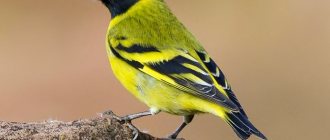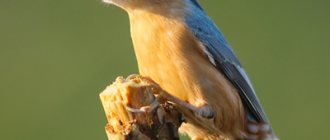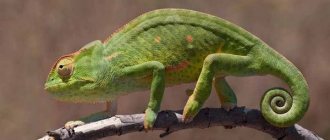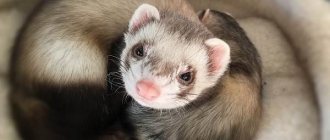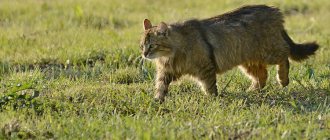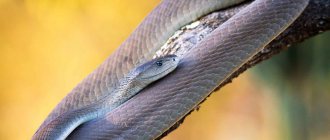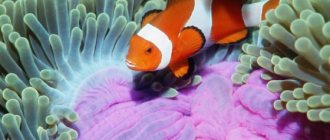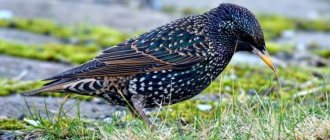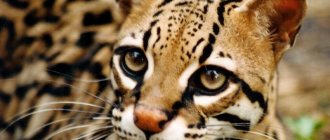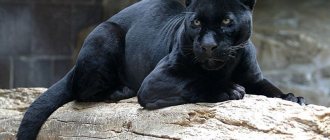What does a cormorant look like?
The plumage is black with a metallic sheen. Many birds have light (even white) spots on their bellies and heads. During the mating season and incubation of eggs, the throat sac, rings around the eyes, and beak become red, brown, and black.
Young birds have light brown feathers, the lower part being noticeably lighter than the upper part. There are no nostrils and there is a long, curved key. At the base of the beak there is a small area without skin, thanks to which related species are differentiated. The paws are arranged far back and are webbed.
The body of cormorants is elongated, so during flight the shape of their body looks cross-shaped and is impossible to confuse. When flying or swimming, birds raise their heads. On a hard surface, the body takes up an angle of 90 degrees with respect to the plane. Takeoff occurs after a short run. In Latin the birds are called: "Phalacrocorax".
The difference between females and males is only in size (the latter are larger).
Where does the cormorant bird live?
Cormorants live on all five continents, they can be found in the tropics and on the Black Sea coast.
There are six species of birds on the territory of the Russian Federation, cormorant:
- small (P. pygmaeus);
- large (P. carbo);
- Japanese (P. capillatus);
- crested (or long-nosed);
- aristotelis (P. aristotelis);
- Bering fish (P. pelagicus);
- red-faced (P. urile).
One of the smallest cormorants is the Indian cormorant. Lives in Indochina, Sri Lanka, Pakistan, Vietnam, India. The color is black, it chases fish underwater and does it very cleverly. Such a cormorant does not fly very well; the flight does not last long.
Cormorant bird in flight
Taxonomy
Latin name - Phalacrocorax carbo English name - Great (black, common, European) cormorant Bird class - Aves Pelican order - Pelecaniformes Cormorant family - Phalacrocoracidae
The great cormorant is one of the largest and most common species of cormorants.
Currently, 7 subspecies of the great cormorant are distinguished based on morphological features (color, voice) and ecological details. There are 2 subspecies found on the territory of Russia - the Atlantic (Ph.c.carbo), in the north along the coast of the Kola Peninsula, and the continental (Ph.c.sinensis), noted in many large inland reservoirs and on the Black Sea coast.
Most notable views
Eared Cormorant
The body length reaches 92 cm, the whole weight is up to 2.6 kg, the color of the feathers is black or brown. The tail is shaped like a wedge, the neck is very elongated. The key has a long tip.
Has short legs. During mating games, a crest appears on the head, and the eyelids become blue or dark blue. These birds live in the USA and Canada. They are even found in Alaska; for the winter they fly to warmer climes (California, Mexico).
Photo of an eared cormorant
Cormorant
It can reach 95 cm, the wingspan is 1.55 meters. The weight reaches a little more than three kg. The bird looks massive, has a long beak and crest. The plumage is dark, almost black, with a greenish tint. Young cormorants have gray plumage and a white belly. These birds can be found in Europe and Asia, as well as Africa, Australia and Canada.
Photo of great cormorant
Bering cormorant
It has a body length of 76 cm, a wingspan of no more than 115 cm, and the bird weighs 1.5 - 2 kg. The plumage is black, with a greenish tint. There is a red skin visible around the key. There is a small crest on the head. Cormorants have a white belly. Birds have settled throughout North America and Asia, and are found even in Oceania.
Bering cormorant
Red-faced cormorant
This bird is small, weighing no more than two kilograms, very similar to the Bering cormorant, but the beak is noticeably longer. Lives in Oceania and South Asia.
Photo of red-faced cormorant
Bougainville Cormorant
The length of the body reaches 77 cm, the wings and body are greenish-black, the abdomen is white. Feathers do not grow on the head; there are white spots above the eyes. Paws are pink. Lives in Brazil, Argentina and Paraguay.
Bougainville Cormorant
Black Sea cormorant
This species lives on rocks. These birds are collective creatures; sometimes large colonies can be found, especially during the mating season. Birds also hunt collectively, there are beaters, they force schools to move in shallow water, they are met by “hunters” who catch the prey. The eggs are incubated alternately by males and females.
Photo of the Black Sea cormorant
Character and lifestyle of the cormorant
Cormorants are diurnal. Birds spend most of their waking time on the water or on the coastal strip, looking for food for themselves and their chicks. They swim quite quickly and agilely, changing the direction of movement with the help of their tail, which acts as a kind of keel.
In addition, when getting food, cormorants can dive deeply, plunging into water to a depth of 10-15 meters. But on land they look rather clumsy, slowly moving in a waddle.
Only some species are sedentary; most birds fly to warmer climates for the winter and return to their original places for nesting. They settle in colonies at nesting sites, sometimes even together with other bird families, such as gulls or terns. Therefore, cormorants can easily be called social birds.
In recent times in Japan, local residents used cormorants for fishing. They put a ring with a tied rope around their necks and released them into the water. The bird caught fish, and the ring prevented it from swallowing its prey, which was later taken by the man. Therefore, in those days in Japan to buy a cormorant bird at almost any local market. Currently, this fishing method is not used.
Including because some rare species of these birds are protected by law and are listed in the International and Russian Red Book. a picture of a cormorant bird was issued in 2003 with a circulation of 10,000 pieces.
Migration
Cormorants have settled all over the planet, they easily fly to different regions, and in winter they tend to move closer to Africa. Cormorants from South Asia move less, they have rich fishing grounds, almost inexhaustible reserves, so they do not fly anywhere, there is no reason for this. Countries where cormorants live:
- Russia;
- Libya;
- Yemen;
- Azerbaijan;
- Iran;
- Türkiye;
- India;
- Pakistan;
- Vietnam;
- Laos;
- Cambodia;
- Oceania;
- And many others.
Cormorants also live in northern latitudes, but with the onset of cold weather and freezing of water bodies, the food supply is reduced, and the birds fly to the South. They can fly many thousands of kilometers.
In some countries, these birds are not welcome; sometimes cormorants (especially in a flock) can be aggressive, for example, they can attack a fishing boat and steal the catch. The owners of fish farms do not like these birds; stealing fish for these creatures is luck, and the owners are forced to count their losses. From time to time, cormorants are even shot.
Eared cormorant on the hunt
What do cormorant nests look like?
Birds live their entire lives with one partner; cormorants are extremely faithful to each other. They nest in large communities. The largest colony of cormorants is in the Cape of Good Hope in South Africa. Scientists have counted several hundred thousand birds on one island. The cormorant is a collective creature; they build nests together; often seagulls, penguins, gannets and even fur seals also nest nearby. Nests are made from twigs and dry reeds. The eggs appear bluish and medium in size. One female is capable of laying 4-6 eggs.
Incubation lasts one month. Eggs are laid in batches. Often chicks differ in their parameters. It takes up to 75 days before the little cormorants begin to develop feathers. Feeding can continue for another hundred days until the chick finally “takes wing.” The plumage of different species varies markedly, appearing at very different periods from 1 to 4 years. The father also hatches the chicks. The offspring are fed with overcooked fish. They prefer to hunt early in the morning or just before sunset. Fish move from the depths to the upper layers, cormorants actively take advantage of this.
Hooded raven and foxes are considered a dangerous enemy for chicks. Crows usually “work” in pairs, one distracts attention, the other destroys the nest. An adult cormorant can easily stand up for itself, it has a powerful beak, it uses it deftly, but the chicks themselves are completely defenseless.
Cormorant in the nest
Reproduction and lifespan of the cormorant
Sexual maturation of cormorants occurs in the third year of life. The nesting period occurs at the beginning of spring (March, April, May). If the cormorant species is migratory, then they fly to the nesting site in already formed pairs; if they are sedentary species, then during this period they split into pairs at their habitat.
These birds build their nest from branches and leaves of trees and bushes. It is placed at a height - on trees, on coastal stones and cliffs. By the time of mating, cormorants put on the so-called mating plumage. Also, before the moment of mating, a mating ritual occurs, during which the formed couples dance, shouting at each other.
Listen to the voice of the cormorant
Eggs are laid into the nest one at a time after a few days; the clutch usually contains three to five greenish eggs. Hatching occurs for a month, after which small chicks hatch into the world, which have no feathers and are not able to move independently.
Before fledging, which occurs after 1-2 months, the chicks are completely fed by their parents. After the appearance of feathers and until the little cormorants learn to fly independently, parents teach them to get food, but do not throw them into independent life, still bringing food for sustenance. The lifespan of cormorants is quite long for birds and can be up to 15-20 years old.
This bird at home, how to keep it, what to feed it.
In Burma, cormorants are tamed to hunt fish using their skills. A collar is attached to a long neck, and a strong fishing line is attached to it. The cormorant dives and chases prey. He cannot swallow the fish right away. The bird is pulled out of the water and the prey is taken away. Cormorants only eat fish, it doesn’t matter whether they live in captivity or in the wild.
Fishing with cormorants
Cormorants in slang
Previously, inexperienced thieves were called cormorants, but now the word has moved from the narrow “thieves’” theme into a wider sphere of use, beginning to mean a narrow-minded, awkward person. The one who is not responsible for his words, the one who has the wind in his head, only chatter on his mind. In a word, someone rather “empty” and stupid.
In contrast to this negative image, a real cormorant , which is a bird, on the contrary, as is already clear from the above, is distinguished by its special intelligence and dexterity. The cormorant bird family is diverse, and each species has something of its own, individual. A distinctive feature, characteristic, skill - in a word, something that makes him unique in his own way.
The list of species and names could go on for a long time; studying this “section” of ornithology is fascinating and informative. One can only be amazed at how amazing the surrounding nature is, the living world created in all its diversity and, at the same time, uniqueness.
Interesting Facts
- Underwater, cormorants “work” not only with their legs; their wings also take part in movement. Underwater, the bird shows miracles of dexterity and feels more confident than in the air.
- After the hunt, the cormorant sits on the shore and spreads its wings, exposing them to the sun, so they quickly dry out.
- The cormorant watches its prey in an unusual way: it sits on the water, immerses its head under the water and watches the fish. Once a target is selected, the bird quietly dives and pursues its prey.
- Bird droppings in South America (guanno) are highly valued and are an ideal fertilizer, for example, for cotton crops. Cormorants are specially encouraged to settle in large colonies. In places where birds live, special devices are placed so that birds land on them during mating or hunting.
- The cormorant's beak opens 145 degrees, which makes it possible to swallow large prey. Strangely, even large fish can pass through the narrow, long throat of a cormorant.
- The Galapogos cormorant cannot fly, it has miniature wings, looks like a duck, the bird can swim perfectly, which allows it to survive.
Who's here
Listen to the cormorant scream
The audio tag is not supported by your browser. Close
Nutrition
A little about the nutrition of cormorants was discussed above, let’s look at the issue in more detail. The main “component” of the daily diet is, of course, medium-sized and also small-sized fish. Birds of this family welcome sardines, herring, and do not refuse capelin and others.
Despite the fact that cormorants feed on fish, it is not the only type of food for the family. They can eat crustaceans, starfish, etc. Some even eat frogs and snakes, turtles, and insects.
But let's get back to the fish. After fishing, which, as is known, is carried out by vigorously diving under water, cormorants have to spend some time on land: the shore, rocks or stones, so that their wings can dry.
The cormorant can often be seen in exactly this position, this is how the bird dries its feathers
Looking at bird nutrition more specifically, the following can be noted. Great cormorant , for example, dives for fish no deeper than four meters. The flight distance to which it “dares” to get food in the sea does not exceed on average fifty kilometers when viewed from land.
The fish that large cormorants usually choose are about a couple of tens of centimeters in length. Birds hunt while afloat, initially positioning themselves on the surface of the water and carefully concentrating on the search. Then they make a sharp jerk down. They hit the fish sharply on the side, grab it with the beak, and then remove it from the water.
The crested cormorant , by comparison, can dive much deeper for the desired prey than the great one! The crested cormorant (also called the long-nosed cormorant) can dive forty meters or even more.
It eats gobies, cod, eels, herring, etc., depending on its habitat. Apart from fish, he doesn’t particularly like anything, except that, as an exception, he may pay attention to a crustacean or mollusk.
Eared cormorants are precisely those who, if something happens, will not mind profiting from amphibians or crustaceans. They may eat insects. However, the preferred type of food for them, of course, remains fish. To obtain food, they choose shallower water areas, up to eight meters deep. They don’t want to go further than five kilometers deep into the sea.
